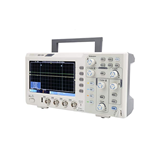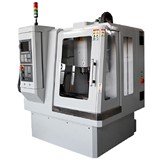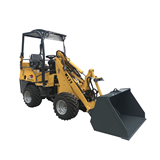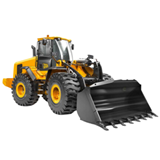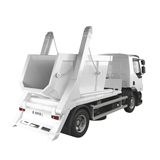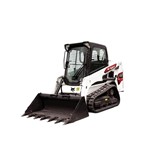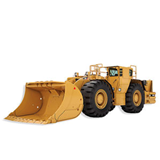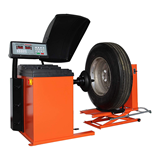Compare used wheel loader prices in Australia. Discover top deals, brands, and tips to buy second-hand loaders with confidence.
Key Takeaways
- Price Range: Used wheel loaders in Australia can cost between $30,000 and $200,000+, depending on age, model, condition, and hours of use. On average, expect to pay around $80,000 - $130,000 for a 5-10 year-old model.
- Types of Machines: Wheel loaders come in three main types: Small, Medium, and Large. Small models typically cost less, while large ones are priced higher due to their increased capacity and power.
- Operating Costs: Operating costs can vary significantly based on machine size, with fuel consumption ranging from 10L/h to 40L/h.
- Financing: Buyers can expect interest rates between 5% and 8% for used equipment financing, with typical loan terms of 3 to 5 years.
- Key Maintenance: Regular maintenance like checking the hydraulic system, tyres, and engine health is essential. It’s also wise to factor in potential repairs for high-wear components like the transmission and bucket.
Introduction
When it comes to heavy machinery for construction, mining, or industrial applications, the wheel loader is one of the most versatile and widely used machines in Australia. These machines are essential for moving materials such as soil, gravel, sand, and waste, and they come in a range of sizes and models. For businesses on a budget, purchasing a used wheel loader can be an excellent option. However, buying used equipment requires careful consideration. This guide will help you understand what to look for, how much you can expect to pay, and how to navigate the used wheel loader market in Australia.
Types of Used Wheel Loaders
Before diving into pricing and considerations, it's important to understand the three main types of wheel loaders:
1. Small Wheel Loaders
- Weight: 5–10 tonnes
- Capacity: 0.5 to 1.5 cubic meters
- Applications: Ideal for light construction, landscaping, and agricultural work.
- Price Range (Used): $30,000 to $80,000 depending on model and condition.
2. Medium Wheel Loaders
- Weight: 10–18 tonnes
- Capacity: 1.5 to 2.5 cubic meters
- Applications: Suitable for mid-range construction tasks, material handling, and waste management.
- Price Range (Used): $80,000 to $150,000 depending on model and condition.
3. Large Wheel Loaders
- Weight: 18+ tonnes
- Capacity: 2.5 to 6+ cubic meters
- Applications: Used for heavy-duty construction, mining, and quarrying operations.
- Price Range (Used): $150,000 to $200,000+ depending on model, condition, and hours of operation.
Prices of Used Wheel Loaders
The price of a used wheel loader in Australia depends on several factors such as the brand, age, condition, and how many operating hours the loader has. Here’s a breakdown of price expectations:
- Under 5 years old: Prices typically range from $100,000 to $200,000+ depending on the model and size.
- 5–10 years old: Expect to pay around $60,000 to $130,000 for medium-sized machines in good condition.
- Over 10 years old: Older wheel loaders can cost as little as $30,000 to $80,000, but these machines may require more frequent repairs and maintenance.
Important Pricing Considerations:
- Brand: Well-known brands like Caterpillar, Komatsu, and Volvo typically hold their value longer, but they also come with a premium price tag.
- Condition: Machines with low hours of use and well-documented maintenance histories will command higher prices.
- Attachments: Machines with extra attachments such as forks or special buckets will be priced higher than those with standard configurations.
Key Considerations When Buying a Used Wheel Loader
1. Hours of Operation
- Check the number of operating hours on the machine. A typical used wheel loader in good condition may last anywhere between 10,000 and 15,000 hours before major components like the transmission or engine need replacement.
- Anything above 10,000 hours can indicate that parts might need immediate attention or replacement.
2. Maintenance and Service History
- Always ask for the service history of the machine. Well-maintained loaders will have a comprehensive service log, showing when key maintenance tasks (like oil changes, hydraulic fluid replacement, or tyre maintenance) were performed.
- Machines that have been regularly serviced will have a longer life expectancy and require fewer repairs.
3. Tyres and Undercarriage
- The tyres and undercarriage are two of the most expensive components to replace. Inspect the tyres for signs of wear or damage, and check the undercarriage for cracks, wear patterns, and signs of fatigue.
4. Hydraulic Systems
- A strong hydraulic system is crucial for the performance of a wheel loader. Check the hydraulic fluid levels, look for leaks, and ask about the condition of the hydraulic cylinders.
5. Engine and Transmission
- Engines in used loaders should be checked for oil leaks, unusual noises, or excessive smoke. If any of these issues arise, the engine may need costly repairs or a rebuild.
- Transmission issues can be costly to repair, so always check for smooth shifting and proper functionality.
Maintenance of Used Wheel Loaders
1. Regular Oil and Filter Changes
- Regular oil and filter changes can extend the lifespan of the engine, improve fuel efficiency, and reduce wear and tear.
2. Hydraulic Maintenance
- Check and maintain the hydraulic fluid levels regularly. Over time, the hydraulic oil can degrade and lead to poor performance.
3. Tyre and Track Care
- Regularly inspect the tyres and tracks for wear. Replacement tyres can be expensive, so proactive maintenance is essential.
4. Cleaning and Inspections
- Cleaning the wheel loader after each use can help you spot potential issues early, such as leaks or loose bolts.
Financing a Used Wheel Loader
If paying upfront isn’t feasible, financing is a popular option for acquiring a used wheel loader. There are several financing options available:
- Traditional Loans: Expect interest rates of around 5% to 7%, with loan terms ranging from 3 to 5 years. Some loans may offer flexible repayment structures, so compare offers for the best deal.
- Leasing: Leasing allows you to rent the machine for a specified term, often with the option to purchase at the end. This can be a good option for short-term needs or fluctuating project requirements.
- Balloon Payment Financing: Balloon payments allow for lower monthly payments during the loan term, with a lump-sum due at the end. This option suits businesses with varying cash flow or those needing equipment temporarily.
Always compare financing options from different lenders to secure the most favourable terms for your business needs.
Warranties for Used Wheel Loaders
Used wheel loaders generally come with limited warranties compared to new equipment, but some dealers may offer warranties, especially for relatively new machines:
- Engine and Transmission: Commonly covered for 3 to 6 months, warranties for key components like the engine and transmission help protect against manufacturing defects.
- Hydraulic Systems: Warranties often extend to the hydraulic systems, typically lasting 3 to 6 months, covering pumps, valves, and cylinders.
- General Wear Parts: Warranties usually exclude wear parts like tyres and filters, but some dealers may offer extended warranty options.
Make sure to fully understand the details of any warranty offered, including the coverage scope and duration.
Compliance and Certification Considerations in Australia
In Australia, used wheel loaders must comply with safety and operational standards. Key compliance considerations include:
- Certifications: Ensure the loader meets the Australian Standards for Machinery (AS 4024) and other safety regulations. The loader should have proper certification, such as a Certificate of Compliance, to confirm it adheres to these standards.
- Inspection: Have the machine inspected by a qualified technician to verify compliance with safety and operational standards. Look for up-to-date inspection certificates.
- Workplace Safety Regulations: The loader must also meet specific safety standards, including features like ROPS (Roll-Over Protection System) for operator safety. Ensure the machine is safe for use in Australian workplaces by confirming all safety features are in place.
Understanding the Total Cost of Ownership (TCO)
The Total Cost of Ownership (TCO) extends beyond the upfront cost. Understanding the ongoing costs is crucial when buying a used wheel loader:
- Fuel Consumption: Fuel costs can vary depending on the loader's size and engine. On average, wheel loaders consume 10-40L of fuel per hour.
- Insurance: Insuring a used wheel loader typically costs between $2,000 to $5,000 per year, depending on the loader's value and age.
- Repairs & Maintenance: Regular maintenance may cost around $1,500 to $3,000 annually. Major repairs (e.g., engine overhaul) can cost upwards of $10,000.
- Service & Parts: Availability of parts can affect maintenance costs. Common parts like filters and lubricants are generally inexpensive, while complex components like hydraulics or engines may be costly.
By factoring in these costs, you can better understand the long-term financial commitment of owning a used wheel loader.
Common Questions Buyers Have About Used Wheel Loaders
1. How can I check if a used wheel loader is a good investment?
- Examine the operating hours, maintenance history, and condition of key parts like the tyres, engine, and hydraulic systems. Ensure the loader has been properly maintained and is in good working order.
2. What is the typical lifespan of a used wheel loader?
- A well-maintained wheel loader can last between 10,000 to 15,000 hours before requiring major repairs or engine replacement. However, this can vary based on usage and upkeep.
3. Are there any red flags when purchasing a used wheel loader?
- Be wary of machines with excessive hours or visible signs of poor maintenance, such as oil leaks, cracked hydraulic lines, or worn tyres. It’s also essential to confirm the machine’s service history and any certifications required for compliance.
4. How can I finance a used wheel loader?
- Options include bank loans, leasing, or balloon payment financing. Interest rates typically range from 5% to 7% and loan terms can last between 3 to 5 years.
Conclusion
Purchasing a used wheel loader can be a smart investment for your business, but it requires careful consideration. From choosing the right type and inspecting key components to understanding financing options and compliance requirements, this guide gives you all the tools to make an informed decision. With the right research and preparation, a used wheel loader can offer excellent value for money while meeting your operational needs.



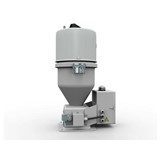


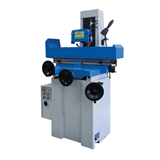



-160x160-state_article-rel-cat.png)


-160x160-state_article-rel-cat.png)
